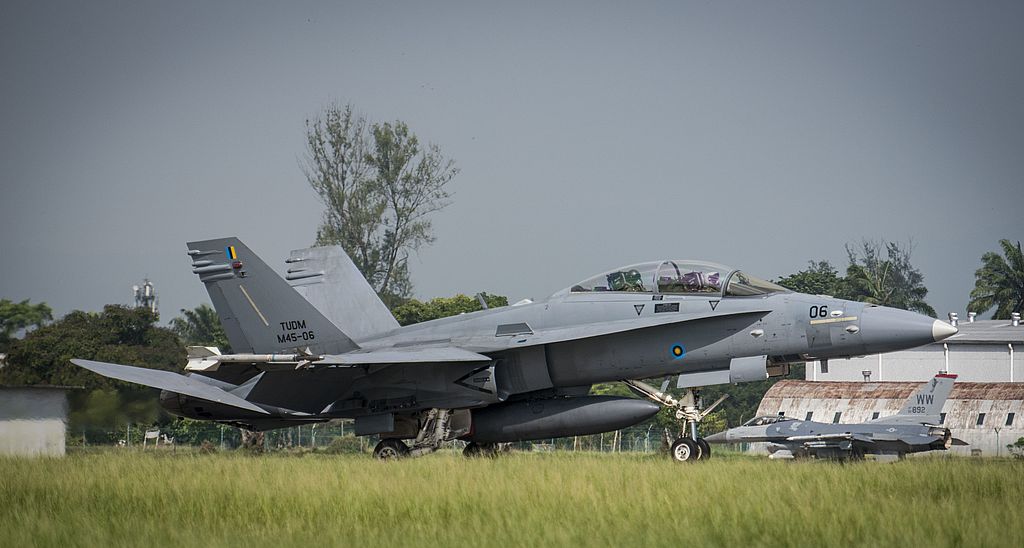
SHAH ALAM: During Cope Taufan 2014, RMAF uses its own self-developed Command and Control system for the exercise. The USAF also brought its deployable system for the exercise but it was not used.
Dzirhan Mahadzir reported in the Star.
“Exercise director RMAF Col Suri Mohamad Daud, a fighter pilot himself, stressed that air combat was only one part of Cope Taufan 2014: “Anyone can go up in a plane and fly but coordinating everything between the two different air forces and the experience gained from doing so is the more important part of it.”
Col Suri stated that a vital element was the RMAF’s home-built Command and Control System which was put together for the exercise and able to tie in all the aircraft, bases and radar stations involved. This was a complex task. given that the aircraft were dispersed among four RMAF airbases – Butterworth, Subang, Kuantan and Gong Kedak – and the aerial exercises took place all over Peninsular Malaysia, with over 400 sorties flown in the exercise period (a sortie is defined as a flight by one aircraft).”
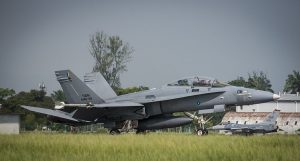
At Cope Taufan 2016, with Col Suri either retired or moved on to other duties, it cannot be confirmed whether RMAF’s own C2 system was used or not.
Instead the USAF used the deployable training system for the first time based on the USAF article below.
‘JDEWR first for RMAF”
Pilots use electronic warfare to simulate training scenarios, but they don’t get to decide who they shoot down when they are up there. A team on the ground controls a system called the Joint Deployable Electronic Warfare Range (JDEWR), which controls the scenario. Cope Taufan 16 marks the first time the Royal Malaysian Air Force (RMAF) has had the chance to use it.
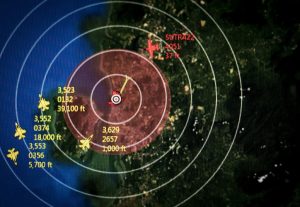
“We are bringing electronic warfare and surface to air threat that is not available here,” said John Karish, 353rd Combat Training Squadron’s, Range Engineer. “The RMAF right now does not have the capability to accomplish that part of their training.”
The JDEWR was developed to expand Pacific Air Force’s training capabilities to a broader audience. JDEWR, a mobile Electronic Warfare oriented autonomous platform, is a system of systems that provides tactical-level training to participants in live training events around the world.
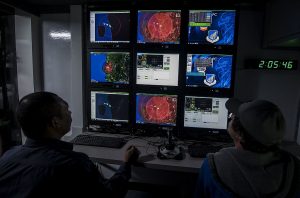
“What we are bringing to the fight is that ground to air defense part, for the Suppression of Enemy Air Defenses players. They have to come in, take them down and not pass those (enemy threats) that they would have otherwise,” said Karish.
During Cope Taufan 14, there were only talks of the JDEWR system and due to limited RMAF capabilities, they were unable to incorporate the system.
“We had some achievements, but it was minimal level achievements at best,” said Maj. Damian Sendhan Sebastian, JDEWR rep for the RMAF. “We have now built up beyond that stage.”
Cope Taufan 16 has provided more opportunities to the RMAF for more hands on training and participation.
“We have additional operators from the RMAF who are learning to use the JDEWR system and as previously we were only observing… now we have aircraft which are directly engaging the JDEWR system, in addition to more aircraft and more platforms…hopefully everyone comes out with more training and a better understanding of electronic warfare,” said Sebastian.
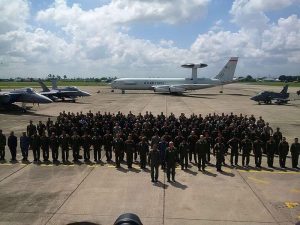
CT 16 allows for an exchange of techniques and procedures to enhance interoperability and cooperation between U.S. and Royal Malaysian Airmen, and the outcome has been a positive one.
“We have a very good professional working relationship with all levels…crew, aircrew, ground crew, technical staff, and even the civilian contractors,” said Sebastian. “The advisors to the JDEWR here have been most helpful, are very open to the system and we have good and positive learning outcomes from all levels.”
Cope Taufan 16 ended on Friday (July 29) but as I had mentioned before, it was a low key event for the RMAF, we might not get any information about it apart from those released by USAF.
— Malaysian Defence
If you like this post, buy me an espresso. Paypal Payment


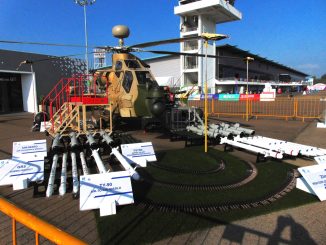

low key but have JDEWR system involved…hmmm….interesting
We need more aew aircraft to be better in aew warfare
Just my 2 cents, with ever increasing tension with China, Malaysia would be a strategic training partner for the US Navy. Malaysia would also benefit from such engagement with the US in terms of increasing its defense force knowledge and skills and to a lesser extent potential more favourable position to acquire excess defense article from the US, should it want to or if there is any availability.
Just to note that the JDEWR is not a command and control system and does not operate as such. It is a deployable electronic warfare training system/simulator (as opposed to a fixed system like raf spadeadam electronic warfare range). It simulates enemy radar, enemy SAM systems (radar tracker, Sam missile lock etc) so that fighter aircraft RWR, MAWS would detect similar electronic emmisions as the real thing, and makes training nearly as realistic as being shot at with real SAM systems. It is mostly used to train SEAD missions in addition for giving pilots the first experience of being locked and shot at by a SAM system.
“low key but have JDEWR system involved…hmmm….interesting”
Perhaps the RMAF meant low-key in the publicity sense. Cope Taufan has always been a fairly complex exercise. Not the most complex, but 2 years ago we had F-22s and special forces involved.
Electronic ranges are the new standard, whether the exercise is “high” or “low” key. Without them, scoring has to be done manually, and a lot more work has to be done to manually replicate threats and radar emissions that can now be simulated.
This is why the T-X program involves moving these simulation capabilities into a LIFT. For the first time, these things can be learned earlier and cheaper than in an operational fighter.
“to a lesser extent potential more favourable position to acquire excess defense article from the US, should it want to or if there is any availability.”
The US almost always has equipment to spare and we don’t have to do more to get it. It is we who have not shown interest, whether because the equipment does not suit our needs or because we rather buy new.
To me, the excess US equipment represents training opportunities, such as cross training in US schools and exercises. The savings in equipment costs are secondary, but still significant because it has a very large support and user base.
Hey Marhalim, any news about AV8 Gempita Development?
Reply
None
kamal – ”be a strategic training partner for the US Navy. Malaysia would also benefit from such engagement with the US in terms of increasing its defense force knowledge and skills ”
What you wrote about is already happening and has been for a while now – we have been conducting bilateral exercises with the U.S. on a regular basis since the mid-1980’s. The only big difference is that the exercises are getting more publicity compared to the 1980’s or even the 1990’s and there is more impetus for both parties to take things to a new level – within the confines of the existing relationship off course.
farid – ”We need more aew aircraft to be better in aew warfare”
I assume you mean ”EW warfare”. EW is a very expensive thing to get into. Very few countries, including many NATO ones, can justify the costs needed to seriously get into the EW game; especially during times of peace when spending this level of cash is hard to justify. Another problem with EW is that it also has to be tailor made to meet the specific threats and capabilities of specific countries; a luxury less than a handful of countries have.
AM – ”Without them, scoring has to be done manually,”
No. In the past the USAF has brought its own ACMI pods and the RMAF has used the ones it has on lease. Naturally, both will never allow the use of respective ACMI pods on the other sides planes as important data can be obtained from this.
I know the RMN has it’s own EW school and that as part of the Jernas offset deal, BAE Systems built a tri-service school but I’m unsure of whether the RMAF has created it’s own EW school. The MAF has been exposed to jamming in the past during exercises; I know of one case back in the 1990’s when Skyguards were jammed by pods carried by RAAF F-111s. Then off course there is the FRA Sigma Aviation Falcon which provides target towing and some EW services for the MAF.
“No. In the past the USAF has brought its own ACMI pods and the RMAF has used the ones it has on lease.”
I’m not sure if the ACMI pods are useful in the SEAD scenarios that the JDEWR simualtes, but still, getting data from the ACMI pods and evaluating it against the exercise criteria that are off the system is a manual process.
malaysia has quite an advanced EW capability from all 3branches of armed forces and also the police. Recently we have established our own joint EW force, with our own EW databases. Collaborations with turkish, sweedish, South African and other countries on EW has been done to further advance the knowledge and understanding of EW realm.
I would say that Malaysia has pretty basic or decent capabilities [in relation to the budget the MAF has]; rather than ”advanced”. We can cooperate all we want with others but at the end of the day, it also largely depends on cash and will. The current threat environment just doesn’t justify us making EW a priority : a situation faced by many, many peacetime militaries, even Tier 1 NATO ones who still rely on the U.S. for this. A valid argument can be made why we should focus on EW but a similar argument can also be made that we are not at war or in a state of tensions and that we should focus on other areas – both arguments are valid.
The stuff we have are the essentials needed, e.g. active jammers on planes and ships [the only ones we had/have were on the Lakasamanas [interestingly the Marikh class came with an active jammer!], land based ESM [VERA] and the various ESM systems aboard the various ships. Back in the 90’s the army ordered a SIGINT system from South Africa and more recently we also ordered ESM payloads from SAAB for use on UAVs. The problem is that what we have are mostly stand alone systems; the state of EW in the MAF hasn’t reach a stage where it can really influence events or be a deciding factor.
This is not to say we don’t realise the importance of EW it’s just that financial realities dictate what we can focus on. The reality is that getting a good grasp of EW [like other highly niche areas such ASW, mine warfare, etc] takes a lot of time and will. At the moment we simply don’t have the equipment we actually need, the cash to buy the equipment, the knowledge to fully put to good use the equipment [if we had it] and the local knowledge to tweak the equipment for our specific needs. Granted EW is essential and not a luxury but the fact remains that it’s a very expensive and resource intensive game to get into and less than a handful of countries can afford to devote the needed focus that EW requires. I’m not aware of any EW gear in use by the police but if it includes RDF gear, then its pretty basic. The MMEA also has RDF gear courtesy of the Japanese government.
Thanks for telling me.Now, I know why the Sukhois are at again up where I am residing.